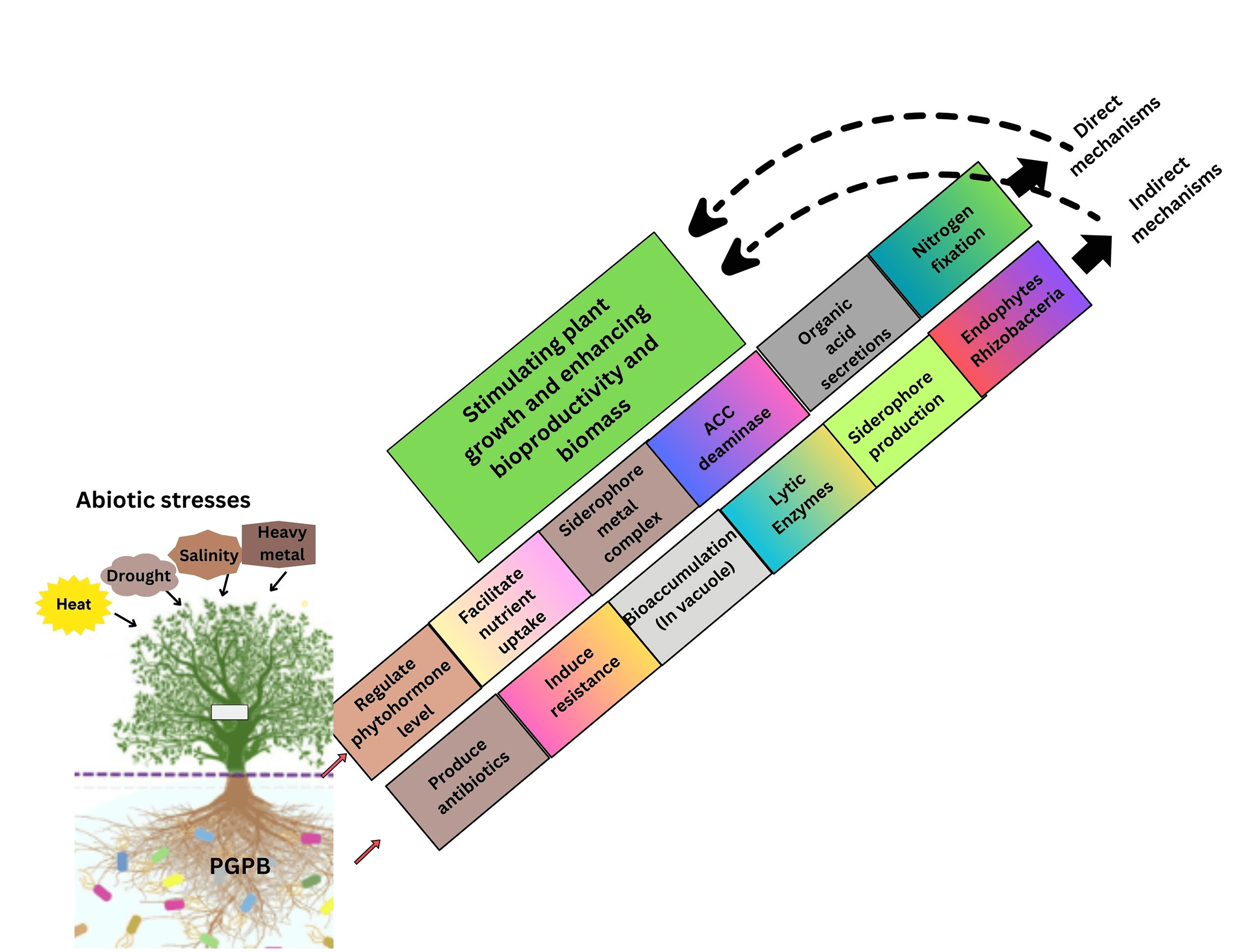 Open Access
Open Access
REVIEW
Reviving Contaminated Soils: Microbe-Aided Phytoremediation for Sustainable Metal Pollution Cleanup
1 School of Agriculture, Forestry and Food Engineering, Yibin University, Yibin, 644000, China
2 Department of Botany, Government College University, Faisalabad, 38000, Pakistan
3 Inner Mongolia Saikexing Institute of Breeding and Reproductive Biotechnology in Domestic Animals Co., Ltd., Hohhot, 011500, China
4 Department of Agronomy, PMAS Arid Agriculture University, Rawalpindi, 46300, Pakistan
* Corresponding Authors: Sara Zafar. Email: ; Zuhair Hasnain. Email:
(This article belongs to the Special Issue: Soil Microbe-Plant Interactions: Unveiling Mechanisms of Biostimulants in Stress Tolerance)
Phyton-International Journal of Experimental Botany 2025, 94(3), 603-621. https://doi.org/10.32604/phyton.2025.062560
Received 20 December 2024; Accepted 10 February 2025; Issue published 31 March 2025
Abstract
Soil metal pollution is a global issue due to its toxic nature affecting ecosystems and human health. This has become a concern since metals are non-biodegradable and toxic. Most of the reclamation methods currently used for soils rely on the use of physical and chemical means, which tend to be very expensive and result in secondary environmental damage. However, microbe-aided phytoremediation is gaining attention as it is an eco-friendly, affordable, and technically advanced method to restore the ecosystem. It is essential to understand the complex interaction between plants and microbes. The primary function of plant growth-promoting bacteria (PGPB) is to stimulate plant development, aid in metal elimination, and reduce their bioavailability in the soil. These microbes regulate phytohormones, stimulate processes such as phytoextraction and phyto-stabilization, and improve the uptake of essential nutrients, such as nitrogen and phosphorus. PGPBs secrete a range of enzymes and chemicals, fix nitrogen, solubilize minerals, increase the bioavailability of nutrients under diverse biological environments with high salinities, excessive metal-contaminated soil, and organic pollutants, increase the soil fertility and help in the reclamation of agriculture and regenerate the native flora. The integration of CRISPR-Cas9 gene-editing technology with microbial-aided phytoremediation and the use of genetically modified microbes with nanomaterials further enhance the efficacy of the approaches in polluted environments for sustainable restoration of the soil.Graphic Abstract

Keywords
Cite This Article
 Copyright © 2025 The Author(s). Published by Tech Science Press.
Copyright © 2025 The Author(s). Published by Tech Science Press.This work is licensed under a Creative Commons Attribution 4.0 International License , which permits unrestricted use, distribution, and reproduction in any medium, provided the original work is properly cited.


 Submit a Paper
Submit a Paper Propose a Special lssue
Propose a Special lssue View Full Text
View Full Text Download PDF
Download PDF Downloads
Downloads
 Citation Tools
Citation Tools
